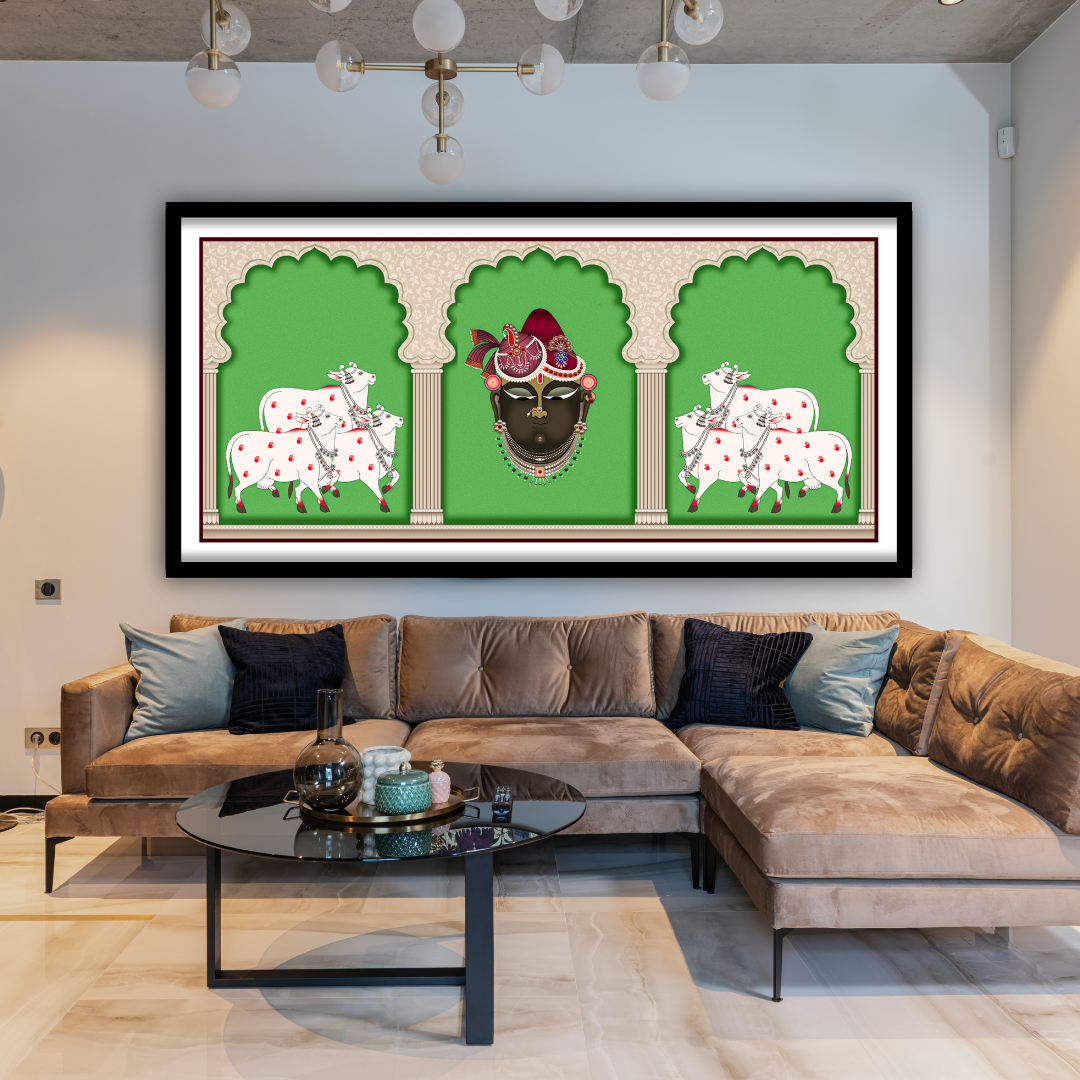Pichwai Paintings are a traditional style of Indian painting that originated in the state of Rajasthan in the 17th century. These paintings are characterized by their intricate details, bright colors, and depictions of Lord Krishna's life and teachings. However, there is much more to Pichwai paintings than just their aesthetic beauty. These paintings are rich in symbolism and carry deep spiritual significance. In this article, we will explore the symbolism and significance of Pichwai paintings.

One of the most prominent symbols in Pichwai paintings is the Lotus flower. The lotus is a symbol of purity, beauty, and enlightenment. In Pichwai paintings, the lotus is often depicted in various stages of blooming, representing the journey of the soul from darkness to light. The lotus is also often associated with Lord Krishna, who is sometimes depicted holding a lotus flower in his hand.
Another important symbol in Pichwai paintings is the Peacock. The peacock is a symbol of beauty, royalty, and grace. In Hindu mythology, the peacock is also associated with Lord Krishna, who is often depicted wearing a peacock feather in his hair. The peacock is also sometimes depicted in Pichwai paintings as dancing, which represents the joy and happiness that comes from devotion to Lord Krishna.
The cow is another important symbol in Pichwai paintings. In Hindu culture, the cow is considered sacred and is often associated with wealth, abundance, and fertility. In Pichwai paintings, the cow is often depicted as standing next to Lord Krishna, who is known as the cowherd. The presence of the cow in these paintings represents the abundance and prosperity that comes from a life devoted to Lord Krishna.
The flute is another important symbol in Pichwai paintings. Lord Krishna is often depicted playing the flute in these paintings, which represents his ability to create beautiful music and inspire devotion in his followers. The sound of the flute is also associated with the sound of the divine, which is said to be heard by those who are pure of heart.
Finally, the colors used in Pichwai paintings also carry deep spiritual significance. The color blue, which is often used to depict Lord Krishna, represents divinity, truth, and eternity. The color yellow, which is often used to depict his clothing, represents knowledge, learning, and enlightenment. The color red, which is often used to depict flowers, represents love, passion, and devotion.
In conclusion, Pichwai paintings are more than just beautiful works of art. They are rich in symbolism and carry deep spiritual significance. The lotus, peacock, cow, flute, and colors used in these paintings all have a specific meaning and represent various aspects of Lord Krishna's life and teachings. By understanding the symbolism and significance of Pichwai paintings, we can gain a deeper appreciation for these works of art and the culture and spirituality they represent





